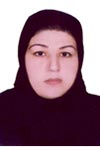Day 2 :
Keynote Forum
Janet Hammond
Roche Pharma Research and Early Development, Switzerland
Keynote: The role of the pharmaceutical industry in responsible antibiotic stewardship
Time : 08:30-08:55

Biography:
Janet Hammond has been head of infectious diseases at Roche Pharma Research and Early Development (Roche pRED) since June 2012. She was previously vice-president, translational medicine in Roche pRED’s former virology research group. Before joining Roche, Janet served as chief medical officer and senior vice-president of global medical affairs at Valeant Pharmaceuticals. Her other industry positions have included: group director, global clinical research, virology and infectious diseases at Bristol-Myers Squibb; and head of clinical drug discovery virology at GlaxoSmithKline. Janet received her MD and PhD degrees from the University of Cape Town, South Africa.
Abstract:
Global public health bodies warn that without urgent, coordinated action the world is heading towards a post-antibiotic era, where previously treatable common infections can once again kill. Antibiotic resistance inevitably develops through continuous bacterial evolution, but excessive inappropriate use of antibiotics accelerates adaptation of infectious organisms to antibacterial medicines. Appropriate antibiotic use accompanied by better testing and diagnostics may ensure treatments are maintained, for longer. This means the urgent need to develop new antibiotics must be accompanied by behavioural changes in how these vital medicines are utilised: A behavioural change in stewardship, for which the pharmaceutical industry can take a leading role. Antibiotic stewardship aims to achieve best clinical outcomes related to antibiotic use while minimizing toxicity and other adverse events: limiting pressure on bacterial populations that drives the emergence of antibacterial-resistant strains. Antibacterial stewardship involves coordinated interventions designed to improve and measure appropriate use of antibiotics by promoting the use of optimal treatment including dosing, duration of therapy and route of administration. The need for coordinated action against multi-drug resistant bacteria has been globally recognized. In May 2014, the Transatlantic Taskforce for Antimicrobial Resistance (TATFAR) recommended incentivizing antibacterial drug development, as is now being done. Governments and regulatory authorities have also created special pathways for new antibiotics given the high, unmet medical need. Pathogen-specific antibiotic development provides the potential to target and tackle specific bacterial infections with the opportunity to combine novel diagnostics that promote personalized healthcare. This innately advocates a more selective and responsible prescribing behavior than with broad-spectrum antibiotics. However broad-spectrum antibiotics are vitally important in treating the majority of bacterial infections in clinical practice and must not be overlooked. Drug development programs have been initiated which look at how novel treatments can restore or potentiate the antibacterial effects of broad-spectrum antibiotics, like beta-lactam antibiotics. The pharmaceutical industry’s role should not be limited to novel drug development: it also has the opportunity to vitally support public and healthcare professionals’ education on the appropriate use of novel treatments. This will contribute to a wider commitment in working with medical societies and institutions in the fight against antibiotic resistance.
Keynote Forum
Stef Stienstra
Dutch Armed Forces/Royal Dutch Navy, Netherlands
Keynote: Novel technologies and innovations for prevention and treatment of “Infectious diseases†including EBOLA
Time : 08:55-09:20

Biography:
Stef Stienstra is a Strategic and creative consultant in biomedical science, with a parallel career as a Commander of the reserve of the Royal Dutch Navy. For the Dutch Armed Forces he has responsibility for the counter measures in CBNRe threats and (medical) consequence management both in a military and a civilian (terrorism) setting. He is strategic functional specialist for “Health & Environment” of the 1-Civil-Military-Interaction Command (1-CMI) of the Dutch Armed Forces and for 2015 also in the NATO Response Force (NRF), which is in 2015 the responsibility of the 1-German-Netherlands-Corps (1-GNC). rnHe was the director of the 2014 World Congress of CBRNe Science & Consequence Management in Tbilisi, Georgia. rnIn his civil career he works internationally as consultant or as scientific supervisory board member for several medical and biotech companies, merely involved in biodefense. He is also visiting professor for Punjab University in Pakistan and Rhein-Waal University in Germany.He has finished his studies in Medicine and in Biochemistry at the University of Groningen in The Netherlands and has extensive practical experience in cell biology, immuno-haematology, biodefense and transfusion medicine. His natural business acumen and negotiation competence helps to initiate new successful businesses, often created out of unexpected combinations of technologies. His good understanding of abstract science combined with excellent skills in the communication of scientific matters to non-specialists, helps him with strategic consulting at top level management.
Abstract:
Introduction: It is impossible to protect whole nations from the effects of bioterrorism by preventive vaccination. There are too many possible agents, the costs would be exorbitantly high, and the health risks associated with complex mass vaccination programs would be unacceptable for the public health authorities. Adequate protection, however, could be provided via a combination of rapid detection and diagnosis with proper treatment for those exposed to biological weapon agents. Preferably this should be done with therapeutics, which would be beneficial in all stages of infection to disease.
Methodology: Immunoglobulins and/or monoclonal antibodies, preferably from human origin, can be used to prevent severe complications by neutralizing or blocking the pathological elements of biological agents and these are the optimal candidates to be deployed in case of biological warfare or a bioterrorist event. Also for natural outbreaks, like the recent and still ongoing Ebola Virus Disease (EVD) outbreak in West Africa, the use of human antibodies against the virus have shown to be effective. These antibodies were givens as immunoglobulin obtained from the plasma from survivors of the EVD or as isolated antibodies from human EBV survivors, which are multiplied in human cell culture processes.
Discussion: As an example of the latter technology recent research in aerosol challenged rabbits has shown that the application of a combination of a human monoclonal antibody against the protective antigen (PA) and one against the lethal factor (LF) of the anthrax toxin is highly efficacious even when given 48 hours after the exposure of animals to anthrax spores.
Conclusion: Having an effective diagnostic system and an effective therapy, one can choose therapy above vaccination for biological threats, which have a low prevalence.
- Track 06: Rapid Assessment Diagnostic Methods
Track 07: Noscomial Infections
Track 08: Therapeutic Agents and Therapeutic Measures
Track 10: Infectious Diseases in Animals
Track 13: Ebola and Current Research

Chair
Stef Stienstra
Marcio J Pocas-Fonseca
Dutch Armed Forces/Royal Dutch Navy, Netherlands
University of Brasilia, Brazil
Session Introduction
Marcio J Pocas-Fonseca
University of Brasilia, Brazil
Title: The epigenetic down regulation of Cryptococcus neoformans major virulence phenotypes is induced by histone deacetylases inhibitors
Time : 09:20-09:40

Biography:
Marcio J Pocas-Fonseca: B.Sc. in Biological Sciences (University of Brasilia-Brazil), M. Sc. in Molecular Biology (1994) and PhD in Molecular Biology from the University of Brasilia in a joint program with the Vienna University of Technology (Austria, 2000). Associate Professor at the Department of Genetics and Morphology, University of Brasilia since 1997. Post-doctoral fellow in Molecular and Microorganisms Genetics at the Institute of Chemical Engineering Vienna University of Technology from August 2006 to October 2007. Post-doctoral fellow at the Department of Microbiology of the University of Delhi South Campus (January-March 2014; November 2014 - March 2015). Expertise and focused on gene structure, function and regulation for cellulolytic and pathogenic fungi, with emphasis in epigenetics. 23 full papers in international indexed journals, 09 book chapters, 02 patents on biotechnology, 13 M.Sc. dissertations as supervisor, 03 PhD thesis as supervisor.
Abstract:
The opportunistic pathogen Cryptococcus neoformans undergoes phenotypical changes during host infection in order to promote persistence and survival. Studies have demonstrated that such adaptations require alterations in gene transcription networks by distinct mechanisms. Drugs such as the histone deacetylases inhibitors (HDACi) Sodium Butyrate (NaBut) and Trichostatin A (TSA) can alter the chromatin conformation and have been used to modulate epigenetic states in the treatment of diseases such as cancer. In this work, we have studied the effect of NaBut and TSA on the expression of C. neoformans major virulence phenotypes and on the survival rate of an animal model infected with drugs-treated yeasts. Both drugs affected fungal growth at 37ºC more intensely than at 30ºC. HDACi also provoked the reduction of the fungal capsule expansion. Phospholipases enzyme activity decreased; mating process and melanin synthesis were also affected by both inhibitors. NaBut led to an increase in the population of cells in G2/M. Treated yeast cells, which were washed in order to remove the drugs from the culture medium prior to the inoculation in the Galleria mellonela infection model, did not cause significant difference at the host survival curve when compared to non-treated cells. Overall, NaBut effects on the impairment of C. neoformans main virulence factors were more intense and stable than the TSA effects. We propose the employment of HDACi in combination to classical antifungal drugs in experimental treatment approaches for severe cryptococcosis animal models. Furthermore, the accumulation of transcripts corresponding to eight C. neoformans genomic sequences presenting homology to fungal histone deacetylase genes was analyzed by qRT-PCR after yeast growth on minimal medium for 30, 60 and 180 min. Since the HD1/2 CNAG_1699, 5276, 5096 and the HOS3 CNAG_00660 genes presented the highest transcripts accumulation levels, disruption cassettes are being constructed in order to evaluate the respective mutant strains virulence phenotypes.
Anibal FF
University of São Paulo, Brazil
Title: Menthapiperita L. improves liver fibrosis on experimental schistosomiasis
Time : 09:40-10:00

Biography:
Anibal FF had her PhD from University of São Paulo, Brazil in Basic and Applied Immunology. She is a Principal Investigator at Laboratory of Parasitology (Federal University of São Carlos) seeks new tools for the treatment, prevention and diagnostics for infectious diseases. Currently, they are working with two plants and six enzymes and their effects against schistosomiasis mansoni and toxocariasis, about the treatment of the infectious diseases, their group studies effects of plants (extracts) and their isolated fractions in order to evaluate the anti-parasitic and anti-inflammatory effects and for infectious disease prevention, moreover have been working on the evaluation of the proteins of the parasite that has been potential to induce immune responses that decrease the parasite burden.
Abstract:
Schistosomiasis is a chronic disease caused by an intravascular trematode of the genus Schistosoma. Praziquantel (PZQ), the only drug recommended by the World Health Organization for the treatment and control of human schistosomiasis, is now facing the threat of drug resistance, indicating the urgent need for new effective compounds to treat this disease. In this work we investigated the immunomodulatory and antiparasitic effects of Mentha piperita L. (peppermint) on murine Schistosomiasis mansoni. Female Balb/c mice were infected each with S. mansoni cercariae and divided into three experimental groups: (I) untreated; (II) treated daily with M. piperita L. and (III) treated on 1/42/43 days post-infection with Praziquantel. Another group with uninfected and untreated mice was used as a control. Subsequently, seven weeks post-infection, S. mansoni eggs were counted in the feces and intestine. Worms were recovered by perfusion of the hepatic portal system and counted. Sera levels of IL-10, IL-13, IFN-_ were assayed by ELISA. Animals treated with a daily dose of M. piperita L. showed increased sera levels of IL-10, IFN-_, IgG2a and IgE. Besides, M. piperita L. treatment promoted reduction in parasite burden by 35.2% and significant decrease in egg counts in the feces and intestine. Moreover, the treatment appears to involve liver modulation after the onset of granuloma inflammation, and prevent liver fibrosis.
Lucian Visan
Sanofi Pasteur, France
Title: Immunogenic effect in CD1 mice upon phosphate addition to Chlamydia trachomatis serovar E rMOMP compositions adjuvanted with a TLR4 agonist and AlOOH carrier system
Time : 10:00-10:20

Biography:
Lucian Visan has completed his Ph.D in immunology at Würzburg University, Germany and moved to Mount Sinai Hospital, University of Toronto for postdoctoral studies. He is now a researcher at Sanofi Pasteur where he leads an immune-bacteriology research unit working on vaccine projects. He has over 10 years of experience in therapeutic and prophylactic vaccines ranging from cancer to infectious diseases.
Abstract:
Genital infection with Chlamydia trachomatis is the most prevalent sexually transmitted disease. Effective vaccination against this common disease will limit the transmission and morbidity associated with it. The objective of the study was to assess the immunogenic effect of rMOMP adsorption and binding strength to an adjuvant comprising the TLR4 agonist E6020 and AlOOH, in CD1 mice. Compositions of Ser E rMOMP and adjuvant were formulated with varying concentrations of phosphate or without phosphate, and administered to CD1 mice three times intramuscularly. The addition of phosphate reduced the % and strength of adsorption of rMOMP to the adjuvant. In the composition formulated without phosphate, 100 % of antigen was adsorbed with high binding strength, whereas in compositions with phosphate, the % and strength of antigen adsorption decreased with increasing concentrations of phosphate. Each composition was immunogenic in CD1 mice. The composition formulated without phosphate stimulated specific total IgG production with balanced IgG1/IgG2a subclasses. In contrast, rMOMP formulated with phosphate induced significantly higher levels of total IgG of predominantly IgG1 subclass, accompanied by high in vitro neutralizing responses. All compositions with the exception of the one with the highest concentration of phosphate elicited a Th1/Th17-like immune response with high IFN-γ and IL-17 production and low IL-13. The composition formulated with the highest concentration of phosphate induced significantly lower IFN-γ and IL-17 production. Here we described an effective method to modulate the immunogenicity of the AlOOH/E6020 adjuvanted vaccine candidate.
Ana Maria Arnaiz-Garcia
University Hospital Marqués De Valdecilla, Spain
Title: Novelties in perioperative antibiotic prophylaxis
Time : 10:20-10:40

Biography:
Ana María Arnaiz-García finished her postgraduate studies in Medicine in 2002 (University of Cantabria-Spain) and completed her resident period in General Internal Medicine in 2007. Since then, she works as consultant in the Unit of Infectious Diseases in the University Hospital Marqués de Valdecilla (Santander-Spain). Her areas of expertise are the nosocomial infections, overall those concerning the treatment of diabetic foot, cardiovascular and neurosurgical patients. These fields are the main fields of her researches. She has published more than 20 papers in reputed journals and is serving as an editorial board member of repute.
Abstract:
The aims of an antimicrobial agent for surgical prophylaxis are to prevent surgical site infection (SSI), reduce the duration and cost of health care, prevent SSI-related morbidity and mortality, produce no adverse effects, and have no adverse consequences for the microbial flora of the patient or the hospital. To achieve these objectives, an antimicrobial agent should be also active against the pathogens most likely to contaminate the surgical site, given in an appropriate dosage and with a timing that ensures adequate serum and tissue concentrations during the period of potential contamination during surgery, to be safe, and administered for the shortest effective period to minimize adverse effects, costs and the development of resistance to antibiotics. The selection of an appropriate antimicrobial agent for a specific patient should take into account the characteristics of the ideal agent, the comparative efficacy of the antimicrobial agent for the procedure, the safety profile, and the patient’s conditions (such as: medication allergies, etc.). For most procedures, cefazolin is the drug of choice for prophylaxis because it is the most widely studied antimicrobial agent, with large proven efficacy. It has a desirable duration of action, spectrum of activity against organisms commonly encountered in surgery, reasonable safety, and low cost. In most of the cases, antimicrobial selection is based on safety profile, cost, ease of administration, pharmacokinetic profile and bactericidal activity. The agent chosen should have activity against the most common surgical-site pathogens. In this session, we will review the novelties about antibiotic prophylaxis that have been published in the literature in last years, to help us to choose the best antibiotic prophylaxis in each situation.
Victoria Knott
Save the Children International, UK
Title: Palliative care in an Ebola treatment centre: Challenges from the front line
Time : 11:00-11:20

Biography:
Victoria Knott completed her MBCHB in 2011 and DTMH in 2014. She has recently spent 4 months working in the Ebola response at Kerry Town Ebola Treatment Centre in Sierra Leone. During this time she was actively involved in clinical case management of patients with EVD and has a keen research interest.
Abstract:
Background: The current outbreak of Ebola virus disease has claimed over 11,000 lives1. Little dialogue exists on care of the dying patient in an Ebola setting. Here we consider demographic data, and discuss our experiences of delivering palliative care at a flagship Ebola Treatment Centre (ETC) in Sierra Leone.
Results: The data collection period was 8th December 2014 to 9th January 2015. Case fatality rate was 34.7% (41/118). Of those who died, the mean age was 30.3 years and 19.5 % (8/14) under 16 years. The mean time from symptom onset to death of 9.1 days (sd 4.4) with a mean time from admission onset to death of 3.7 days (sd 3.2). 2
Discussion: Patient infectivity in life and death and necessary infection control procedures delay symptom management, limit clinician time onwards and present physical barriers to non-verbal communication. Clinician inexperience and short admission time makes diagnosis of death challenging in this young cohort, while patient isolation prevents contact with relatives and restricted burial practices cause bereavement upset.
Conclusions: Introduction of pre emptive medication preparation, employment of a clinical psychologist, 24 hour clinician presence, palliation decisions made by the senior physician and body bags with viewing panels appears to improve palliative care provision reducing patient distress and improving acceptance of death by relatives.
Luke Hunt
Liverpool School of Tropical Medicine, UK
Title: Clinical presentation, biochemical and haematological parameters and their association with outcome in patients with Ebola virus disease: An observation cohort study
Time : 11:20-11:40

Biography:
Luke Hunt completed his BSc in 2010 and MBCHB in 2012. He has recently spent 7 months working in the Ebola response at Kerry Town Ebola Treatment Centre in Sierra Leone. During this time he was actively involved in clinical case management of patients with EVD and has an active research interest.
Abstract:
Background: Clinical management of Ebola Virus Disease (EVD) remains challenging. Routine laboratory analytics are often unavailable in the outbreak setting, and few data exist on the associated haematological and biochemical abnormalities. We present laboratory and clinical data from the Kerry Town Ebola Treatment Centre in Sierra Leone to better inform clinical management algorithms, improve understanding of key variables associated with outcome and provide insight into the pathophysiology of EVD.
Methods: 150 patients with confirmed EVD were admitted between 8th December 2014 and 9th January 2015. At admission, all patients had clinical presentation recorded and blood taken for Ebola confirmation using reverse-transcriptase–polymerasechain- reaction (RT-PCR) and for haematological and biochemical analysis. The association between these and clinical outcome was evaluated.
Findings: The mean age of cases was 26 years. Case fatality rate was 35% (55/150). Most patients presented with stage 2 (gastrointestinal involvement, 61%, 72/118) and stage 3 (severe/complicated, 10%, 12/118) disease. Acute Kidney injury (AKI) was common (50%, 52/104), as were abnormal serum potassium (33%, 32/97), severe hepatitis (59%, 54/92) and raised CRP (21%, 21/100). Haematological abnormalities were common, including raised haematocrit (15%, 15/100), thrombocytopenia (45%, 47/104) and granulocytosis (42%, 44/104). Severe AKI, low RT-PCR cycle threshold (<20 cycles) and severe hepatitis were independently associated with mortality.
Interpretation: EVD is associated with a high prevalence of haematological and biochemical abnormalities, even in mild disease and in the absence of gastrointestinal symptoms. Clinical care targeting hypovolaemia, electrolyte disturbance and AKI are likely to reduce historically high case fatality rates. The manuscript reports laboratory abnormalities from the largest cohort to date and is the first to report on hematological abnormalities. It has been accepted for publication in the Lancet Infectious Diseases
Lovisa Ringstad
SP Technical Research Institute of Sweden, Sweden
Title: Formulation of antimicrobial peptides
Time : 11:40-12:00

Biography:
Lovisa Ringstad had completed her PhD in pharmaceutical physical chemistry from Uppsala University, Sweden. Her thesis work focused on understanding mechanism of action of antimicrobial peptides. She is currently a researcher and project leader within the Life Science area at SP Technical Research Institute of Sweden. She is highly involved in the EU-project FORMAMP – Innovative nanoformulations for treatment of infectious diseases and is also the coordinator of a competence platform in formulation science at SP. Her main research interests are in the areas of pharmaceutical formulation, adsorption phenomena, biolubrication and perception. She has published 18 papers in peer-reviewed journals.
Abstract:
In the development of new therapeutic strategies for treatment of infectious diseases antimicrobial peptides (AMPs) have great potential due to their fast and at time multiple mechanism of action, possibly translating in lower propensity in resistance development. A large variety of AMPs have been identified and isolated from plants, animals and humans and their structure is well preserved. These have also been assessed, analyzed and modified in order to increase their function and efficiency for drug delivery applications. However, only a few candidates have reached late stages of clinical trials and to date no products based on AMPs have reached the market. One of the main reasons is the challenge related to stability of peptides during storage as well as after administration, which dramatically reduces the efficiency. These challenges can be overcome by choosing novel formulation strategies. In an ongoing FP7 project, FORMAMP, innovative nanoformulation strategies are used to formulate well-characterized AMP candidates. In addition, these nanocarriers are formulated in functional dosage forms for topical and pulmonary delivery for local/targeted treatment of bacterial infections. Carrier systems based on lipid self-assembly structures offers possibilities for peptide delivery due to their ability to incorporate and protect compounds with various properties and to control and trigger release. As a part of FORMAMP these are used to formulate AMPs and the loading capacity, peptide interaction properties and release mechanism are investigated. Importantly, also improvements on chemical and biological stability will be evaluated together with the effects on antibacterial, immunomodulatory and cytotoxic activity of the peptides in these systems as well as their effects against biofilms are considered.
Himani B Pandya
S.B.K.S Medical College, India
Title: Prevalence and microbiological diagnosis of H. pylori infection and its antibiotic resistance pattern in patients with acidpeptic disorders
Time : 12:00-12:20

Biography:
Himani B Pandya has completed her Ph.D. (medical microbiology) from Pramukh Swami Medical College, Karamsad affliated to Sardar Patel University. She worked as a Lecturer and Head of department (MLT) for 11 years at Shree P.M. Patel college of Paramedical science and technology, Anand, Gujarat. She has guided 10 M.sc. MLT students for their dissertation work. She is presently working as a Tutor in S.B.K.S medical college, Gujarat in Microbiology Department. She has published 8 research papers in reputed national and international journal. She got First prize for oral presentation on VI annual conference of Indian Association of Medical microbiologist- Gujarat chapter 2011.
Abstract:
Helicobacter pylori play major roles in the pathogenesis of duodenal ulcer diseases, chronic antral gastritis, Gastric ulcer diseases and, possibly Gastric cancer. Intend of the study was to find out the prevalence of H. pylori infection with reliable diagnostic method along with its antibiotic resistance pattern. From 855 symptomatic patients, four antral biopsies were collected in a sterile BHI broth and were processed for Rapid urease test, Gram’s staining, Culture and histopathological staining (Warthin-Starry stain and Giemsa) and serum sample were tested for H. pylori IgG and IgA antibody by using ELISA. Antimicrobial susceptibility testing of 80 clinical isolates was performed by Kirby-Bauer disk diffusion method. Prevalence rate of H. pylori infection was found 14.6% (125/855), infection was found highest in gastritis patients. Sensitivity of serology (98.8%) and Gram’s staining (96.8%) was highest, while Rapid Urease test, Culture and Gram’s staining showed highest specificity of 99.9%, 100% and 98.5% respectively. Sensitivity of IgG-ELISA was better than IgA-ELISA. Primary antimicrobial resistance of H. pylori to metronidazole was very high (83.8%), followed by amoxicillin (72.5%), clarithromycin (58.8%) and tetracycline (53.8%). The association of Gram stainingand rapid urease testis best for quick evaluation of the infectious status of patient. Our results also recommend the need of sensitivity profile regionally and periodically before the general use of an eradication schedule.
Sandra Milena Chingaté
Universidad Nacional De Colombia, Colombia
Title: In silico design of analogue peptides derived of bombina species with improved antimycobacterial activity in vitro
Time : 12:20-12:40

Biography:
Sandra Milena Chingaté is Chemist, Magister in Biochemistry Science and doctoral student in Biochemistry Science at the Universidad Nacional De Colombia . Director of Career Technology in Industrial Chemistry at the Technological Corporation of Bogota. She has developed her research in the area of antimicrobial peptides as new anti-TB compounds in the research group Biochemistry and Molecular Biology of Mycobacterium at Universidad Nacional De Colombia.
Abstract:
Tuberculosis has become a major public health problem due to the emergence of multidrug resistant Mycobacterium tuberculosis strains; therefore, the development of new anti-TB compounds is necessary. The secretions from the skin of the Bombina species have antimicrobial peptides with broad-spectrum activity. In this work, using the server (http://www.imtech. res.in/raghava/antibp/index.html) and database (APD,http://aps.unmc.edu/AP/main.php), derived amino acid sequences of Bombinin and Maximin 1 that displayed the best antibacterial score, cationic and helical structure that improve their interaction with the mycobacterial membrane were obtained. The same analysis was used to modify the primary structure of the selected amino acid sequences in order to increase their antimycobacterial features. The designed peptides were synthesized by the Fmoc technique, characterized by MALDI-TOF and their activity was determined on M.smegmatis mc2155 cells using resazurin. In addition, were assessed the hemolytic activity, their ability to interfere the basal ATPase activity of M. smegmatis mc2 155 plasma membrane and cytotoxic activity on murine macrophages J774. The experimental strategy allowed to find the 15 amino acid sequence derived of Bombinin and Maximin 1 with the best antibacterial characteristics and helical structure (peptide-A). The replacement of some amino acids of the peptide-A enabled to find a new sequence (peptide-B) with helical structure to be found, also improved positive charge and augmented antibacterial value. The peptide Maximin 1-B showed a lower MIC (2400μg/mL to 150μg/mL), and Maximin 1-A showed a higher inhibition of the basal ATPase activity of M. smegmatis mc2155 plasma membrane (24, 4%), and the peptides don’t show toxicity over murine macrophages.
Sabia Qureshi
Guru Angad Dev Veterinary and Animal Sciences University, India
Title: Isolation and characterization of a new broad acting lytic Pasteurella-phage
Time : 12:40-13:00

Biography:
Sabia Qureshi belongs to the Department of Veterinary Microbiology, College of Veterinary Science, Guru Angad Dev Veterinary and Animal Sciences University, Ludhiana, India
Abstract:
We have isolated a genus specific Pasteurella-phage lytic to the vaccine strain P52 (B:2) as well as multidrug resistant field isolates of P. multocida (B:2) and fowl cholera agent (P. multocida A:1). It had an icosahedral head (27 x 24nm) and a well marked 134.5 nm long non-contractile tail characteristic of the order Caudovirales, family Siphoviridae. Its genomic DNA had four restriction sites for AluI and four for HaeIII which is strikingly different from a Pasteurella-phage reported earlier with restriction sites for Hind III and Bam HI. Its SDS PAGE profile revealed 15 proteins 5kDa-160kDa in size with major polypeptides of 170, 100, 71 and 20 kDa, respectively. Immunoblot analysis revealed seven major immunogenic proteins of 20, 27, 30, 42, 50, 60, 71kDa, respectively. The phage was found to be stable in pH range of 5-9. It survived at -200C even after 48hrs of incubation, but failed to survive 30 min of incubation at 600C. It survived treatments with proteinase-K (20mg/ml) and lysozyme (20mg/ml) however, its survivability decreased to 10% and 5%, respectively after 20 min of exposure. RNase did not affect the survivability of the phage. A few minutes of exposure to UV rays proved detrimental to its survival.
J N Agrewala
CSIR Institute of Microbial Technology, India
Title: Self-adjuvanting promiscuous peptide of Mycobacterium tuberculosis augments polyfunctional Th1 and Th17 cells and evokes better protection and endurance of memory T cell response than BCG
Time : 14:00-14:20

Biography:
J N Agrewala did his BSc, MSc and PhD from Agra University, Agra. In 1989, he joined as a Scientist at the CSIR-Institute of Microbial Technology, Chandigarh. He was a Visiting Scientist at the Royal Postgraduate Medical School, Hammersmith Hospital, London, UK [1994-1996] and Trudeau Institute, Saranac Lake, USA [2001-2002]. Currently, he is working as a Chief Scientist at the CSIR-Institute of Microbial Technology, Chandigarh. He received the Shanti Swaroop Bhatnagar award, National Bioscience award for career development and new idea research talent award. He received a fellowship from Medical Research Council (MRC), UK.
Abstract:
In tuberculosis-endemic population, the main reason for the failure of BCG vaccine is the obstacle caused by non-tuberculous mycobacteria and helminths in its processing and presentation. Usually, peptides do not require extensive antigen processing since they can bind to major histocompatibility complex molecules and therefore can be directly presented to T cells. As a result, peptide vaccines can surmount the problems associated with BCG failure. It is well-established fact that not only adaptive but also innate immunity plays a crucial role in protection against tuberculosis. Hence we have constructed a novel lipopeptide vaccine by linking promiscuous CD4 and CD8 epitopes of Mycobacterium tuberculosis to Pam2Cys, a Toll like Receptor-2 agonist. This lipopeptide has unique property of self-adjuvanting and concurrently activating both innate and adaptive immunity. The vaccine binds directly to MHC I and MHC II molecules and TLR-2. It stimulates dendritic cells to secrete cytokines, upregulates the expression of costimulatory molecules and significantly augments their ability to present antigen to T cells. Further, the vaccinated animals impart robust and enduring memory Th1 and Th17 response. The protection observed is significantly better than BCG. This lipidated-peptide vaccine is unique since it overcomes MHC barriers and evokes immune response irrespective of HLA polymorphism in human. This vaccine has enough potential to induce long-lasting protection against Mycobacterium tuberculosis. Therefore it can be a potent future vaccine candidate for controlling tuberculosis.
Lijuan Zhang
National Institute for Communicable Disease Control and Prevention, China
Title: Agrarian residents in china are at increased risk of vector born rickettsioses, anaplasmosis and ehrlichiosis
Time : 14:20-14:40

Biography:
Li-juan Zhang (MD, PhD) is the Director of the Dept. of Rickettisology, National Institute for Communicable Disease Control and Prevention, China CDC. She is and PhD Candidate Supervisor and one of the members of the Committee of Natural Focus Disease, Ministry of Hygiene of People’s Republic of China, and a member of the National Zoonoses Committee. Her research interests are national surveillance of Rickettsioses, Anaplasmosis and Ehrlichiosis and molecular epidemiological and pathogenesis researches of rickettsiae, anaplasma and ehrlichia .She has published more than 60 papers on the surveillance of rickettsiae and basic research on rickettsiae agents.
Abstract:
More and more epidemiological evidences indicated that the annual numbers of the emerging anapalsema and ehrlichia and the reemerging rickettsiae have steadily increased in China and the outbreaks of these zoonoses have frequently reported resent years. Of the traditional rickettsioses, scrub typhus, caused by Orientia tsutsugamushi (Ot), is one of the serious acute febrile illness in China. In some severe endemic areas of southern China, hundreds of farmers suffered scrub typhus in small villages each year. Similarly, murine typhus, caused by R.typhi, is highly prevalence in some rural areas although the louse borne epidemiological typhus has been controlled in China. Noticeably, a big outbreak of murine typhus involved 76 patients occurred in drug detoxification program from Ruili City, Yunnan Province in 2010.Besides R.sibirica and R. heilongjiangensis, emerging spotted fever group rickettsiae (SFGR) including R.raoulti, R.felis, R. massiliae and SFGR Hainan-1 were successively detected in China recent years. Specifically, a highly seroprevalence of the SFGR Hainan-1 were identified in 46.1% of the adult population and 37.5% of the preschool children in the local areas, respectively. Active national investigations indicated that the emerging tick born E.chaffeensis and A.phagocytophilum were highly prevalence among agrarian residents, domestic animals and some wild animals. In particular, an unusual transmission of nosocomial cases of human granulocytic anaplasmosis occurred in Anhui Province in 2006. In China, the rickettsial diseases are the greatest challenge to public health. Notably, rural residents are not only at increased risk of these zoonoses but also these diseases are mostly underrecognized.
Khalid Mubarak Bindayna
Arabian Gulf University, Kingdom of Bahrain
Title: Dysregulation of human beta defensin-2 gene expression in peripheral blood of patients with sepsis and non-septic critically ill patients
Time : 14:40-15:00

Biography:
Khalid Mubarak Bindayna received his Ph.D in Medical Microbiology from Faculty of Medicine, University of London in 1989. More than thirty publications are credited to his name. Currently Prof. Bindayna is chairing the Department of Microbiology, Immunology and Infectious Diseases of the College of Medicine and Medical Sciences. He is also the Director of the Master in Laboratory Medicine program at the College.
Abstract:
Endogenous antimicrobial beta defensins, including human beta defensin 2 (hBD2), play an important role in the immune defense response to various infections and inflammatory diseases. We investigated the quantitative expression of hBD2 in peripheral blood of patients with sepsis, non-septic critically ill patients and healthy individuals. RNA was extracted from peripheral whole blood of 30 patients with sepsis (12 with septic shock and 18 without septic shock), 10 critically ill non-septic patients and 20 healthy control individuals and the expression level was analyzed by quantitative real time PCR. The mRNA expression of hBD2 was significantly upregulated in peripheral blood of sepsis and non-septic critically ill patients compared to healthy individuals. Despite low number of patients which limits the statistical power of the study, hBD2 mRNA expression was significantly downregulated in peripheral blood of sepsis patients with septic shock compared to patients without septic shock. The discrepancy between hBD-2 expression in sepsis and non-septic critically ill patients could explain the differences in the immune response between these two diseases, and the severity of sepsis may contribute to the dysregulation of hBD2 gene expression. Future studies examining hBD2 protein level as well as mRNA expression could lead to the development of a potentially new biomarker for sepsis.
Zahra Mohammadzadeh
Iranian Social Security Organization, Iran
Title: Comparing the effects of Hypericum perforatum L. and metronidazole vaginal gel in treatment of bacterial vaginosis: A randomised controlled clinical trial
Time : 15:00-15:20

Biography:
Zahra Mohammadzadeh have completed her MSc course in the field of midwifery (midwifery education) in 2013 from Tabriz International University of Medical Sciences (Aras) under the supervision of Dr. Sakineh Mohammad-Alizadeh-Charandabi, Associate Professor of reproductive health. She had more than 18 years working experience as an expert in midwifery in the hospital, clinic & private office. Currently, working as a midwife in the clinic and also as a medical records expert in the Social Security Organization.
Abstract:
In-vitro studies indicate a strong antibacterial activity of Hypericum perforatum. However, we found no study on this area in human. In this double-blind, double dummy trial, we aimed to compare the effect of Hypericum perforatum with metronidazole vaginal gel on treatment and recurrence (primary outcomes) of bacterial vaginosis (BV) and on patient complaints (secondary outcomes). 162 married women aged 18-49 with BV were randomized into two groups. The intervention group (n=82) got 5 gram of 3% Hypericum perforatum and placebo of metronidazole vaginal gel, and the control group (n=80) got 5 gram of 0.75% metronidazole and placebo of hypericum perforatum vaginal gel for 5 days. Amsel criteria were used for diagnosis, cure and recurrence of BV. We used Chi-square, Fisher’s exact, logistic regression for data analysis.At 10-12 days after starting treatment, cure rate was 82% in the intervention and 85% in control group (risk ratio (RR) 0.9, 95% confidence interval (CI) 0.6 to 1.3). Among the cured women, recurrence rate was 9% in the intervention and 13% in the control group at the 30-35 day visit (RR 0.8, 95%CI 0.4 to 1.3). There was no significant difference between the groups regarding any patient complaints, except itching which was less in Hypericum perforatum group (5% vs. 16%, p=0.018 at the first and 13% vs. 43%, p<0.001 at the second followup). No significant adverse event was reported at any groups. Therefore, Hypericum perforatum could be a good option for treatment of BV. However, further studies are needed for its public use.
Ricardo Durães Carvalho
Massachusetts Institute of Technology, USA
Title: Phylogenetic and phylogeographic mapping of the avian coronavirus in wild and synanthropic birds
Time : 15:20-15:40

Biography:
Ricardo Durães Carvalho has experience in Biochemistry (with emphasis on metabolic biochemistry) and Bioinformatics. Currently is working with Virology, Molecular and Cellular Biology, Genetics, Phylogeny and Molecular Evolution applied to Coronaviruses and Influenza virus.
Abstract:
The evolution and population dynamics of Coronaviruses (CoVs) remain underexplored. In the present study, in-depth phylogenetic and Bayesian phylogeographic studies were conducted to investigate the evolutionary dynamics of CoV detected in wild and synanthropic birds. A total of 500 samples, including tracheal and cloacal swabs collected from 312 wild birds belonging to 42 species, were analysed using molecular assays. A total of 65 samples (13%) from 22 bird species were positive for Avian Coronaviruses (AvCoVs). Three hundred and two (302) samples were screened for the Pan-coronavirus (Pan-CoV) selective essay, 17 (5.6%) were positive, and 11 were detected in different species. AvCoVs molecular evolution analyses revealed that the sequences from samples collected in Brazil did not cluster with any of the AvCoV S1 gene sequences deposited in the GenBank database. Bayesian framework analysis estimated an AvCoV strain from Sweden (1999) as the most recent common ancestor of the AvCoVs detected in this study. Furthermore, the analysis inferred an increase in the AvCoV dynamic demographic population in different wild and synanthropic bird species. Phylogenetic analysis of the Pan-CoV showed that most of the samples clustered with the Murine Hepatitis Virus A59 strain (MHV A59) belong to the BetaCoV group. Besides, one of our samples that was detected in Amazona vinacea (common name: parrot-breasted-purple) clustered with a CoV isolated from pigs, PCoV HKU15, belonging to the DeltaCoV genus, still not reported in South America. Our findings suggest and reinforce that birds may be potential new hosts responsible for spreading of different CoVs for different species of animals.
Shereen Ahmed El Masry
Ain Shams University, Egypt
Title: The promising rule of neutrophil cd64 as an early diagnostic and prognostic marker in neonatal sepsis
Time : 15:40-16:00

Biography:
Shereen Ahmed El Masry is MD, Faculty of Medicine, Ain Sham University, Egypt. She is an Assistant professor of clinical and chemical pathology, Faculty of medicine, Ain Sham University, Egypt. She is the Head of (infection control unit) at Ain Shams University specialized hospital.
Abstract:
Background: In spite of extensive research for understanding and treatment of neonatal sepsis, sepsis stills a major source of morbidity and mortality among neonates, it represents a diagnostic burden problem by showing minimal initial nonspecific manifestations. The clinical course can be fulminate and fatal if treatment is not commenced promptly. Neutrophil CD64 showing a promising value as early diagnostic and prognostic marker for neonatal sepsis.
Aims: Our aim was to assess nCD64 as an early predictive and monitoring marker and the best panel of markers that can achieve the highest diagnostic performance in this disease.
Methods: This study conducted over 8-months and included a total of 175 sepsis evaluations, neonates classified into three groups: Documented sepsis group, Clinical sepsis group and Control group. Blood samples were collected for hs-CRP, CBC, nCD64 (done by Flow Cytometry) and blood culture to confirm the diagnosis in the patient’s group.
Results: A significant increase in nCD64 was found in sepsis group than in control group. nCD64 had AUC = 0.864 with an optimal cut off at 42% with sensitivity of 86 %, specificity 93.3%, NPV 68.3 %, PPV 97.5 % and efficacy 87.7%. Combination of CRP and CD64 achieve the highest diagnostic and prognostic performance over the other haematological parameters.
Conclusions: We can conclude that nCD64% & CRP combination represent the best early predictor and monitoring panel of markers that can be used conventionally in NICU, Our study suggests that nCD64 % is ready to be incorporated in the routine daily work as a valuable marker.
Heba Ezzat Hashem
Ain Shams University, Egypt
Title: The predictive and prognostic values of neutrophil cd64, neutrophil cd11b, monocyte cd14 and presepsin in neonatal sepsis
Time : 16:20-16:40

Biography:
Heba Ezzat Hashem is MB BCh Faculty of Medicine at Ain Sham University, Egypt. She is a senior resident doctor at Department of Clinical and Chemical Pathology, Faculty of Medicine, Ain Shams University, Egypt.
Abstract:
Background: Neonatal sepsis represents a diagnostic burden problem by showing minimal initial nonspecific manifestations. The clinical course can be fulminate and fatal if treatment is not commenced promptly. It is therefore crucial to establish early diagnosis and initiate adequate therapy. Blood culture takes up to 7 days for results and may be inconclusive, thus there is an urgent need for a specific accurate marker for early diagnosis. The challenge of biomarker identification is reflected by the fact that over 3000 sepsis biomarker studies last years. Neutrophil CD64, CD11b, monocyte CD14 and presepsin showed particular promise in this aspect.
Aims: In this study we assessed the utility of all mentioned markers as an early predictive and monitoring marker and the best panel of markers that can achieve the highest diagnostic performance in this disease.
Methods: Our study conducted over 9-months and included a total of 84 sepsis evaluations, neonates classified into three groups: Documented sepsis group, Clinical sepsis group and Control group. Blood samples were collected for hs-CRP, CBC, nCD64, nCD11b, m CD14, presepsin and blood culture.
Results: A statistically significant difference in levels of nCD64, presepsin and mCD14 was found in sepsis groups than in control group; however nCD64 achieves the highest diagnostic performance than the other biomarkers. Combination of 2 markers achieves the highest diagnostic and prognostic performance over a single hematological parameter.
Conclusions: We can conclude that nCD64% represent the best early predictor and monitoring marker that can be incorporated in the routine daily work in NICU.
Usman Iqbal
Taipei Medical University, Taiwan
Title: Irrational antibiotics prescribing behavior of physicians in Taiwan
Time : 16:40-17:00

Biography:
Usman Iqbal is currently a Health Informatics Researcher and project manager of several national and international Health IT projects at Graduate Institute of Biomedical Informatics, College of Medical Science and Technology, Taipei Medical University. He has been an author of many scientific articles and he has also participated at many national and international medical conferences. He has been awarded with the ISA-TMU scholarship for two years Master’s program in 2010 and also in 2012 for three years Doctoral program in Health Informatics. His areas of focus are on Observational Health Data and Informatics, Hospital Information System (HIS) for patient safety, and Electronic Medical Records and Telemedicine & Mobile Health at resource poor settings.
Abstract:
Irrational and imprudent antibiotics prescribing for acute bronchitis is a greater concern in globally. We got interested to see the whether the policy implication for antibiotics prescription on Taiwanese physicians would influence in following years or not. We analyzed the antibiotics prescribing trends for acute bronchitis by using 1 million population cohort data from Taiwan’s Bureau National Health Insurance Database of 1998-2011 years. We selected all subjects who visited with acute bronchitis and presence of antibiotics prescription for 18-44 and 45-64 age and sex groups. The patients who were admitted to the hospital or visits associated with chronic pulmonary disease, immunodeficiency, cancer, or concomitant infectious diagnoses were excluded from the study. We found a total of 257446 visits for acute bronchitis who met our study inclusion criteria. We take into account the specialty or settings such as medical center, area hospital, local hospital and non-evaluation hospitals as well as the region of the hospitals Taipei, Northern, Central, Southern, Pingtung and Eastern to mimic the bias. We observed that the overall antibiotic prescription rate was 33.0%. However, the actual antibiotic prescription rate was observed 57.0% for years 1998 to 2001. From 2002 the results showed that there was a significant reduction in the antibiotic prescription to 28.2%. Our results provided evidence that the new laws and regulations introduced for reimbursement purposes by BNHI Taiwan in 2001 related to upper respiratory tract infections, discouraged physicians from prescribing antibiotics if it is not proven by a bacterial infection through blood examination. The behavioral change was observed up to 20% patients with proven bacterial infection.
E-Poster Presentations 17:20-18:30 @ Hall 1
Anshu Kumar Jha
Manipal University, India
Title: Quality of life amongst HIV and tuberculosis patients
Time : 17:00-17:20

Biography:
Anshu Kumar Jha has completed his MBBS (Bachelor of Medicine and Bachelor of Surgery) at the age of 22 years from Manipal University and is currently pursuing compulsory rotatory internship (as a part of MBBS) at Kasturba Medical College, Mangalore. As an under-graduate he has done 5 research projects and currently holds 2 publications in indexed journals. He has also the received the “Youngest speaker award” in the year 2013 at KAPICON (Association of Physicians of India Conference-Karnata Chapter) 2013 and was selected as the “Indian ambassador” for the ISCOMS (International Student Congress on (bio) Medical Science) 2015 conference.
Abstract:
As per 2009 statistics India has the third largest number i.e. 2.3 million PLHIV of which 0.3 million died of tuberculosis. To improve the quality of life (QOL) it is crucial to identify it’s determinants. Studies have been performed in PLHIV but there is a dearth of literature on the QOL of HIV-TB co-infected patients.
Aim: To assess and compare the QOL in HIV infected patients with and without TB and identify the factors responsible for poor QOL. A cross-sectional study (HIV+ve subjects with and without TB) with non-random sampling was conducted at ART centers. With 80% power, 95% confidence interval, a ratio of 1:3 of HIV/TB vs HIV without TB and 10% non-responders, sample size of 104 was calculated. A semi-structured questionnaire collects clinoco-demographical data and Beck’s Depression Inventory to identify depression by interview, WHOQOL-HIV BREF to assess the QOL by interview and medical record. It had 31 items divided into six domains:- Physical, Psychological, Social, Level of independence, Environment and Spiritual. For each there was 5 point likert scale where 1 indicated low/negative perception and 5 high/positive perception. Analysis by SPSS version 11.5 software. Out of 104 subjects 26(25%) were HIV-TB co-infected (group I) and 78 (75%) only HIV infected (Group II) of which 64(82%) in stage 1 and 14(18%) in stage 2 but all 26 of group I were in stage 3 (p<0.001) and on ART. Only 42(53.8%) of group I were on ART (p<0.001). The mean (Standard Deviation) of various domains of QOL for group I & II were- Physical health- 9.92(2.03) & 12.78(2.20) [p<0.001], Psychological health- 10.98(1.78) & 13.18 [p<0.001], Social health – 12.08(2.03) & 13.24(2.28) [p=0.02], Environmental health- 10.67(1.76) & 13.09(2.17) [p<0.001], Level of independence- 9.73(1.51) & 11.41(2.08) [p<0.001], Spiritual health- 9.77(2.26) & 12.23(2.45) [p<0.001]. HIV infected subjects with TB had poor QOL in all domains and strong association is present between educational status with QOL. In only HIV positive subjects being on ART and family support was the most important factor.
Eiman Mokaddas
Kuwait University, Kuwait
Title: Evaluation of the performance of 2 DNA-based methods for the detection of extra-pulmonary tuberculosis in comparison with the conventional culture technique
Time : 17:20-17:40

Biography:
Eiman Mokaddas is a professor in the Department of Microbiology, Faculty of Medicine, Kuwait University, Kuwait.
Abstract:
Introduction: Diagnosing extra-pulmonary tuberculosis continues to be a challenge for both infectious disease specialists and microbiologists.
Objectives: This prospective study was done to evaluate the performance of 2 DNA-based methods for the detection of extrapulmonary tuberculosis in comparison with conventional culture technique.
Methods: All extra-pulmonary specimens received by the Kuwait National Tuberculosis Reference from October 2011 till August 2013 were included in the study. Smears were stained by Zeil Nelson (Merck, Germany) followed by inoculation of the specimens into Gene Xpert MTB/RIF assay (Cephieid, USA) , Prob Tec ET PCR(Becton Dickinson) and MGIT 960( Becton Dickinson). Urine was inoculated into Lowenstein Jonson media (MAST).
Results: A total of 1674 extra-pulmonary specimens ( pleural fluid 553, ascetic fluid 194, cerebrospinal fluid ( CSF) 85, Urine 67, other sterile body fluids 153, Fine needle aspirates ( FNA) 301, pus 181, tissue 102, swabs 27 and stool 11) were evaluated. Out of 155 extra-pulmonary specimens that grew Mycobacterium tuberculosis by culture, 143 were positive by GeneXpert compared to 128 by ProbTec with a sensitivity of 92% and 83%, respectively. Out of 1517 specimens which did not grow by culture, 52 were detected by GeneXpert while 46 were detected by ProbTec with specificity of 96.5 and 96.9%, respectively. All the 4 Smear- negative CSF samples which grew M.Tuberculosis were positive by GeneXpert with a sensitivity of 100% compared to only 2 detected by ProbTec with a sensitivity of 50%. Additionally all CSF specimens that did not grew by culture were negative by both the molecular methods showing 100% specificity. Of the 3 smear positive urine specimens that grew by culture all were positive and of the 64 samples that did not grew by culture all were negativeby both the molecular methods with a sensitivity and specificity of 100%. For other sterile body fluids the sensitivity and specificity of both the methods were 68% and 99%, respectively. Finally for FNA, pus and tissue, the sensitivity of GeneXpert was 97% compared to 86% for ProbTec.
Conclusion: DNA-Based technology looks promising for the rapid diagnosis of extr-pulmonary Tuberculosis with an overall better performance of GeneXpert over PropTec.
Eiman Mokaddas
Kuwait University, Kuwait
Title: New approached in the diagnosis of sepsis
Time : 17:40-18:00

Biography:
Eiman Mokaddas is a professor in the Department of Microbiology, Faculty of Medicine, Kuwait University, Kuwait.
Abstract:
Introduction: Sepsis is a fatal condition caused by body’s immune system over-reacting to infection. It carries both high morbidity and mortality. Early diagnosis of sepsis can greatly reduce both.
Objectives: To evaluate the comparative performance of Verigine blood culture nucleic acid system to conventional techniques in the rapid diagnosis of sepsis by both identifying bacteria and their resistance markers.
Methods: All blood culture bottles showing Gram-positive cocci and Gram-negative bacilli were processed by Verigene according to the manufacturer’s instructions and were cultured simultaneously by conventional methods for both ID as well as susceptibility using VitekII (Biomerioux, France).
Results: A total of 63 patients with Gram-positive sepsis and 63 patients with Gram-negative sepsis were included in the evaluation. Verigine system correctly identified all stapylococcoci, streptococci and enterococci, Enterobacteriacae and Pseudomonase euroginosa compared to the conventional culture. It correctly identified 11 methicillin-susceptible Staphylococcus aureus (MRSA) and 15 methicillin resistant coagulase negative staphylococci. It correctly identified one MRSA, failed to identify 2 and falsely identified 2. It correctly identified 11 vancomycin sensitive enterococci. By rapid identification of staphylococci together with their resistance markers, vancomycin was de-escalated to cloxacillin in 11 patients and cloxacillin was escalated to vancomycin in 2 and all antibiotics were stopped in 14 patients. By rapid identification of Gram-negative bacteria, deescalation and escalation from and to carbapenems occurred in 2 and 20 patients respectively.
Conclusion: Rapid molecular diagnosis of sepsis can greatly assist in the proper use of antimicrobial agents hens, helping the antimicrobial stewardship program.
